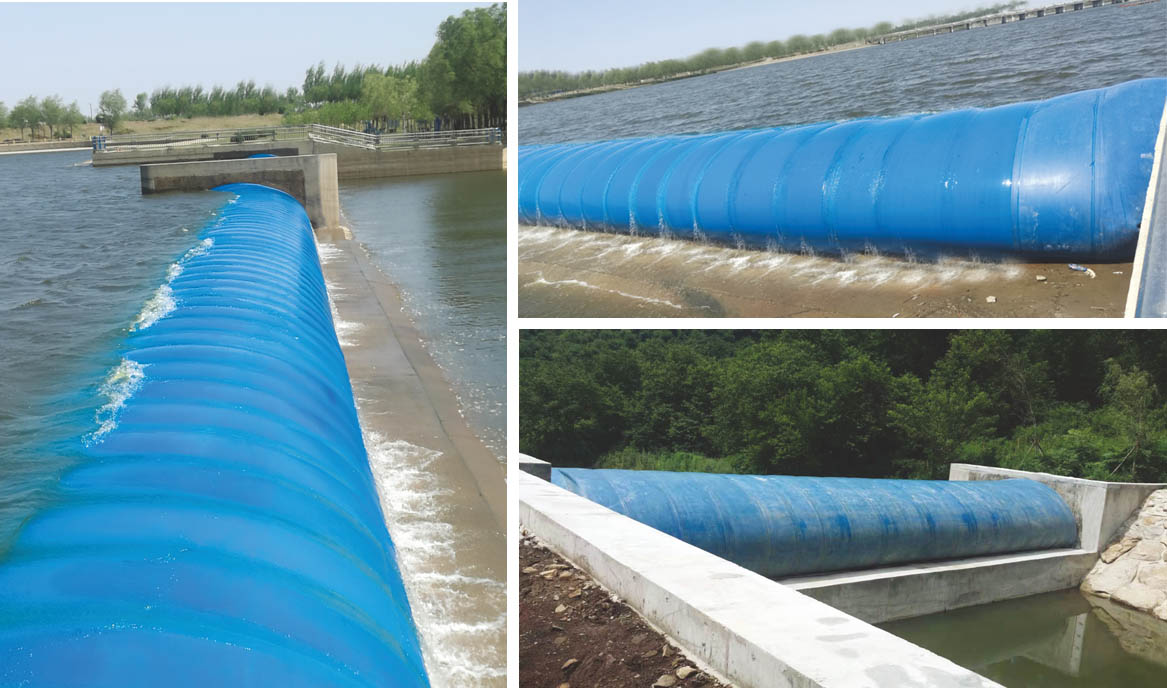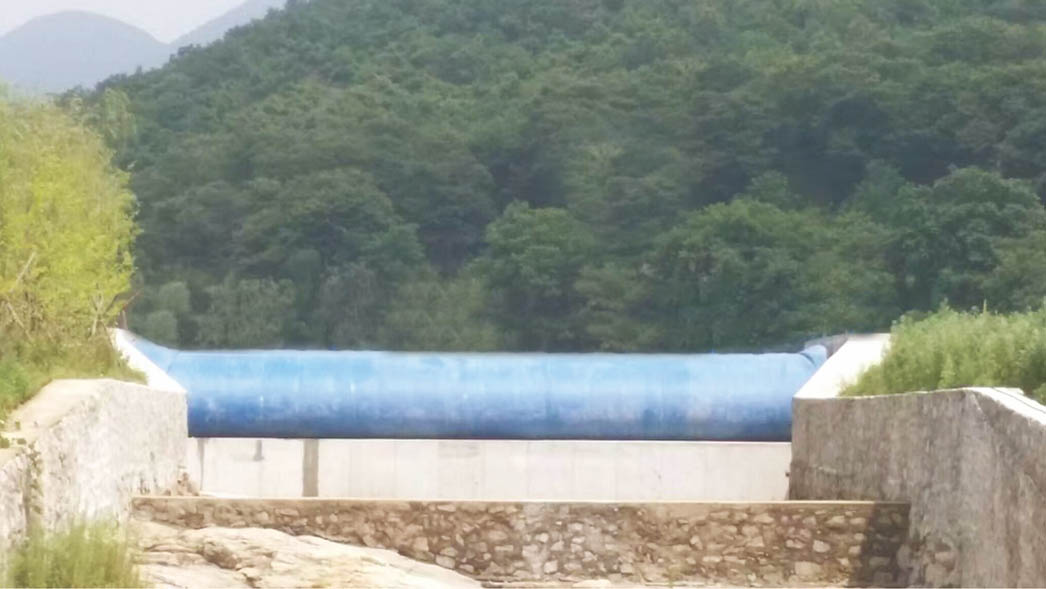Rubber Dam

elastomeric rubber bearing pad
2019年3月29日Rubber Dam
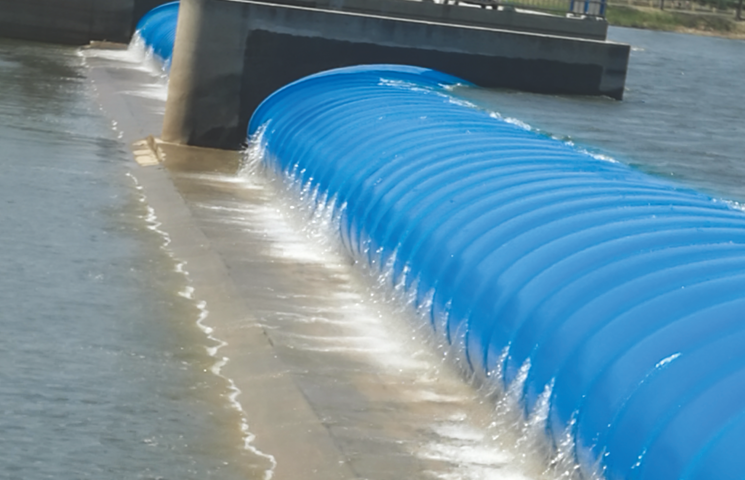
Rubber Dam
Along with the development of polymer synthetic materials industry, rubber dam as an innovative hydraulic structure, is composed of high strength fabric as reinforced framework and synthetic rubber which anchored on concrete foundation to form a sealed bag. In dry season, the sealed bag will be filled with water or inflated with air to form a dam for retaining water to meet the water needs of industry, agriculture and daily use. In rainy season, discharge the water or air from the sealed bag until the dam falling down which will not influence the flood discharge of river. With advantages of short construction period, long service life, convenient operation and maintenance, strong seismic resistance and so on, rubber dams have been widely used in irrigation, power generation, flood control and urban environment beautification etc.
Classification:
- According to the filled medium, it can be classified into water filled rubber dam and air inflated rubber dam.
- According to the installation form, it can be classified into pillow-like rubber dam and slope rubber dam.
- According to anchor form, it can be classified into bolt anchoring and wedge block anchoring.
- Different specifications and parameters of dam bags can be selected according to the size of water head, air pressure, framework material and internal pressure ratio.
- General safety factor is about 8 times, it can be ordered according to customer requirements.
- Our company produces various colours rubber dams for users to choose.
Integral Jointless Rubber Dam
In order to improve the quality of rubber dam products, BAOLI company spares no effort in manpower and material resources, spent tens of millions and to develop and produce a water-filled integral jointless seamless rubber dam with international technical strength , which fills domestic gap.
Features of Integral Jointless Rubber Dam
- It adopts one-time molding, one-time vulcanization, the whole seamless, without secondary vulcanization. Reduce damage and thereby increase the strength of the rubber and fabric.
- With good integrity, reduced fluctuating pressure of water flow, improved seismic capacity, it can prevent resonance phenomenon in water flow.
- Integral jointless rubber dam greatly improves the fatigue resistance, flexural resistance and service life.
- The dam bag is flat and uniform in thickness.
- There is no overlap on the whole surface of the dam bag, which improves the puncture resistance and greatly reduces the probability of puncture and tear.
Material
- Dam bag materials can be devided into: one layer of fabric and two layers of rubber, two layers of fabric and three layers of rubber, three layers of fabric and four layers of rubber, etc.
- The external rubber layer is thicker with function of wear resistance, sunshine resistance, aging resistance and so on.
- Middle rubber layer has the function of protecting and connecting fabric.
- Internal rubber layer has the function of air tightness, water tightness and fabric aging prevention.
Features
- Complete specification: There are various models with water-proof height from 0.5m to 6m, and rust-proof measures include spray paint, galvanizing, asphalt-impregnated paint, etc.
- High standard: Unified moulds by fine manufacturing with universal parts, can be assembled at will by teams before and after.
- High strength: By using high strength material and steel plate, the safety factor of cold rolling forming design is more than three times of the design tension force of dam bag.
- Easy to install: The material used is easy to cut and weld, concave and convex butt joint is adopted between the plates, so as to the leak-proof effect is good.
- All-round service: Various types of anchorage can be produced according to user’s requirements.
Section View of Dam Bag’s Operation State

Dam Bag Form Graph

Product Material Graph
one layer of fabric, two layers of rubber

two layers of fabric, three layers of rubber

three layers of rubber, four layers of rubber

Anchor Form graph
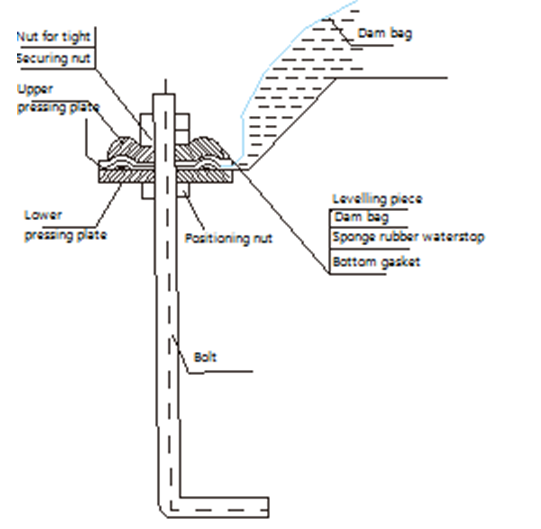
bolt anchor
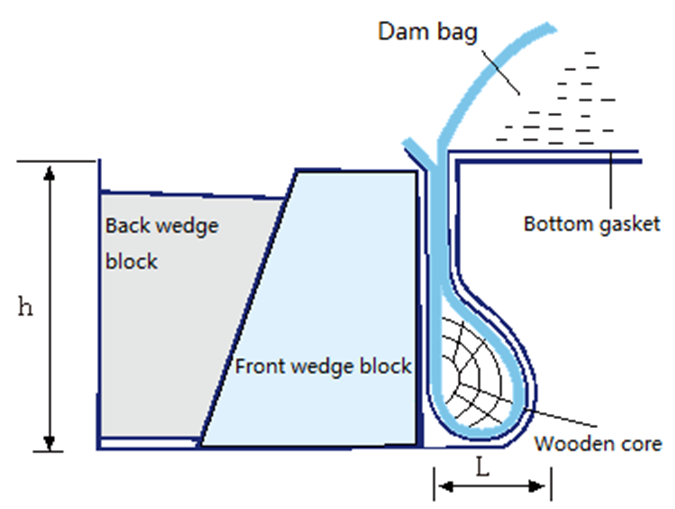
wedge block anchor
Installation of Dam Bag
Check before dam bag installation
- The strength of concrete of foundation floor and side wall must meet the design requirements.
- The contact surface of dam bag, bottom plate and side wall should be flat and smooth.
- Filling and draining pipes should be clear and free from leakage.
- The position and size of the pre-embedded bolts, base plates, pressing plates, nuts (or anchor grooves, wedges, wooden cores), water (air) inlet and outlet ports, exhaust holes and overpressure overflow pipes shall meet the design requirements.
- After the dam bag and the bottom gasket are transported to the site, the sizes should be firstly checked and whether there is any damages, repair or replace it if there is any damage.
Dam bag in place procedure
- When the dam bag and bottom gasket are in place and the direction should be determined according to the design requirements.
- The dam bag and bottom gasket must be in place accurately and determined by the technical instructor according to the site conditions.
- The position of water cap, pressure measuring pipes and overpressure pipe should be drawn on the base plate.
- The water-stopping sponge (air-stopping cloth) can be adhered to the bottom plate.
Dam bag installation procedure
- Draw the axes and centerlines separately on the base foundation.
- Bottom gasket in place (means double anchorage).
- A layer of rubber sheet should be pasted on the bottom gasket around the filling and draining pipes, pressure measuring pipes and overpressure overflow pipes in the dam bag for reinforcement treatment.
- The dam bag anchoring line should be consistent with the concrete foundations.
- The anchoring sequence of dam bag in place: Downstream first, then upstream, or it can be carried out at the same time. The anchorage of the dam bag shall be installed from the center of the bottom foundation to both sides at the same time. Side wall anchorage should be folded, straightened out, leveled and without reinforcing by shears.
- Install upper pressing plate, fasten screw, step-by-step fastening, do not fasten in place at one time.
- Secondary grouting anchorage groove, equal to dam foundation
Pictures of hydraulic Rubber Dam
